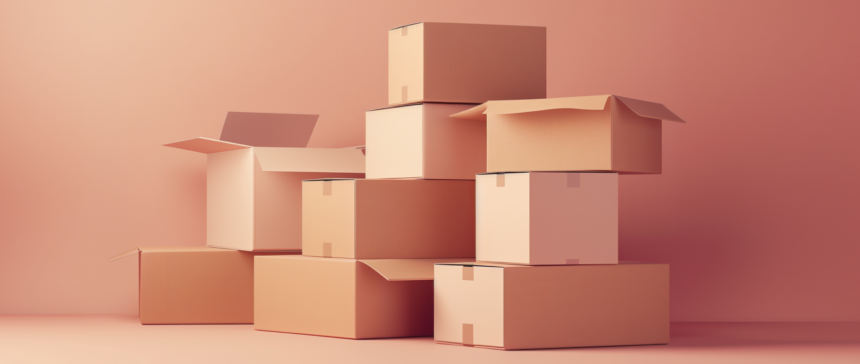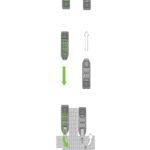E-commerce businesses need an inventory management system to avoid out-of-stocks, a common problem for e-commerce sellers.
However, in the unfortunate event of a stockout, e-commerce sellers can continue to sell their products online through a process called backordering. Although selling back-ordered items can offset some of the downsides of being out of stock, there are some downsides to consider as well. Learn more about how backorders work, what causes backorders, and tips to reduce backorders in your business.
What is a backorder?
A backorder is when a customer purchases a product that is temporarily unavailable (due to insufficient inventory levels) and ships it at a later date. When a customer places a backorder, the purchase is reserved and the seller will try to fulfill the order as soon as possible.
There is no required delivery schedule for backordered items, but sellers aim to fulfill backorders within a few weeks. Merchants who accept backorders can process payments immediately after a customer places an order, after the order ships, or even after the item arrives.
Backorder and Out of Stock: What’s the Difference?
You cannot purchase out-of-stock items, but you can purchase back-ordered items even if they are temporarily out of stock. Customers place a backorder with the knowledge that they will receive the product or service they purchased in the future, but the out-of-stock item may not be available for purchase again.
Advantages of selling ordered products
E-commerce businesses typically try to minimize backorders as much as possible, but selling backordered products provides the following benefits for merchants:
Reduce inventory carrying costs
if you have excess inventory, the total cost of storing those items can start to add up.known as Inventory carrying costs, which includes costs such as handling costs, insurance, and the cost of renting or owning storage space. Depending on your company’s business model, offering backorder items can help avoid overstock and reduce inventory carrying costs. You can make items available on backorder and place bulk orders with suppliers once orders exceed a threshold.
Increased demand for products
Products listed as backorder can communicate to customers that the product is in high demand. If used strategically and with clear communication about delivery schedules, listing some backordered products on your company’s website can lead to a higher perceived value of those items.
In this way, backorders are social proof—A psychological phenomenon that explains the human tendency to form opinions and take actions based on the opinions and actions of others. For example, a customer purchasing headphones online may find certain brands or styles more appealing based on their perceived popularity as backorder items.
Continue selling even when inventory is low
Backorders allow sellers to maintain a sales channel for a particular product even if that product is not currently on the shelves of the company’s warehouse or retail store. Therefore, backorders help keep sales more or less constant even when fluctuations in supply and demand occur.
For example, a seller selling sunglasses that suddenly went viral on TikTok may not have the inventory to meet demand and may offer the product on backorder to maintain market share.
Better insight into customer demand
Listing items on backorder gives you a clearer idea of which products and services are in demand. You can decide how much inventory to buy for different items based on customer orders. For example, an e-commerce entrepreneur who sells water bottles can prioritize the marketing and inventory of certain colors based on the number of backorders received.
Disadvantages of selling backordered products
There are some major drawbacks to accepting backorders that sellers should keep in mind:
Extended fulfillment time
In today’s fast-paced e-commerce world, customers Immediate shipping Same-day delivery of items purchased online is also possible. The longer you make your customers wait for their purchases, the less satisfied they will be with their overall shopping experience.
loss of sales
If you sell a backordered product that has a lot of competition in the market, you may lose sales to a competitor who has that product in stock. Offering backordered products and services is more effective for sellers who sell high-value items with little competition.
For example, more expensive items such as fine jewelry or outdoor gear are better suited for backorder than cheaper impulse items such as cell phone accessories or kitchenware.
Increased chances of cancellation
The longer it takes to process an order, the more likely the customer is to cancel it. If you processed a customer’s backorder payment at the time of purchase, you must process a refund for that order.
Even if you wait for payment to process until the shipment or delivery is complete, inventory management and bookkeeping tasks are still required. Considering all the logistics required to make a backorder possible, the process can consume more resources than the order is worth.
What causes backorders?
Backorders occur when there is an imbalance between demand and supply due to a variety of factors, including:
unexpected customer demand
Backorders can occur when demand exceeds supply. This can involve abnormal demand due to several potential factors, including seasonal demand changes, price changes, market fluctuations, and the success of marketing campaigns. A sudden increase in demand is good for profits, but it can lead to more backorders and out-of-stocks for companies.
For example, a fashion brand Flexin’ in My Complexion The first apparel line sold out within minutes after a social media post by entrepreneur Kelis Rogers, who was just 10 years old when the company was founded, went viral.
supply chain issues
You may also need to list backordered items due to supply chain delays.these supply chain issues It can occur due to political and economic challenges, rising energy costs, and infrastructure issues with suppliers. For example, the COVID-19 pandemic has increased port congestion and created supply chain issues for e-commerce merchants around the world.
manufacturing issues
A slowdown in manufacturing could lead to lower inventory levels. This could be because the manufacturer lacks the raw materials needed for a particular product, or even because there are problems with the manufacturing process itself.
human error
Another cause of stockouts is mistakes made by the people who produce, supply, or ship the product. For example, warehouse management discrepancies can result in lost or missing inventory, and even small errors in purchase orders can cause fulfillment delays.
Tips to reduce backorders
Here are some tips to consider when trying to reduce backorders in your company.
carry safety stock
Safety stock An additional amount of inventory held by the seller as a contingency plan to avoid backorders. A low safety stock level indicates that new safety stock must be acquired to prevent stock shortages. This strategy is especially effective for businesses that have additional storage space and consistent demand for their products or services.
Establish reorder points
Define Sort points For each product, determine when inventory levels are low enough to order additional inventory. Reorder points are a key element of your inventory management system to ensure that your inventory is replenished before it runs out.
Set up automatic alerts to stay informed of inventory levels.Integrated e-commerce platforms such as Shopify Comprehensive features make inventory management easy Analysis and reporting A tool that features real-time data on how long current inventory is expected to last.
Use inventory forecasting tools
Forecast future demand for your product using: Inventory forecast tool. These software tools help predict sales trends based on historical data. Accurate forecasting tools can help you maintain appropriate inventory levels for your online store and anticipate spikes in demand.
Work with multiple suppliers
Another way to reduce backorders is to partner with multiple suppliers. Even if you have a primary manufacturer of products you sell, look into multiple backup options with similar products available. If he only works with one supplier to order inventory, he risks missing out on sales if that supplier delays shipments or stops offering the product altogether.
communicate with customers
If out-of-stocks are unavoidable, keep your customers happy by accurately estimating when out-of-stock orders will be fulfilled. Please make sure that backordered items are clearly listed on your online store.setting automated email sequences Send customers updates about the status of backordered items. Establish an order fulfillment process that prioritizes and ships back-ordered items in a timely manner.
What is backorder?
What does backorder mean?
Backordered items refer to items that are currently out of stock and have been purchased by a customer and are expected to be shipped or delivered at a later date.
How long does it take for back-ordered items?
Delivery times vary for each backordered item, but typically backorders can take anywhere from a few weeks to a few months.
What is an example of a backorder?
An example of a backorder would be purchasing a new smartphone that is currently out of stock due to high demand, but knowing that it was reserved to be fulfilled in the future.






